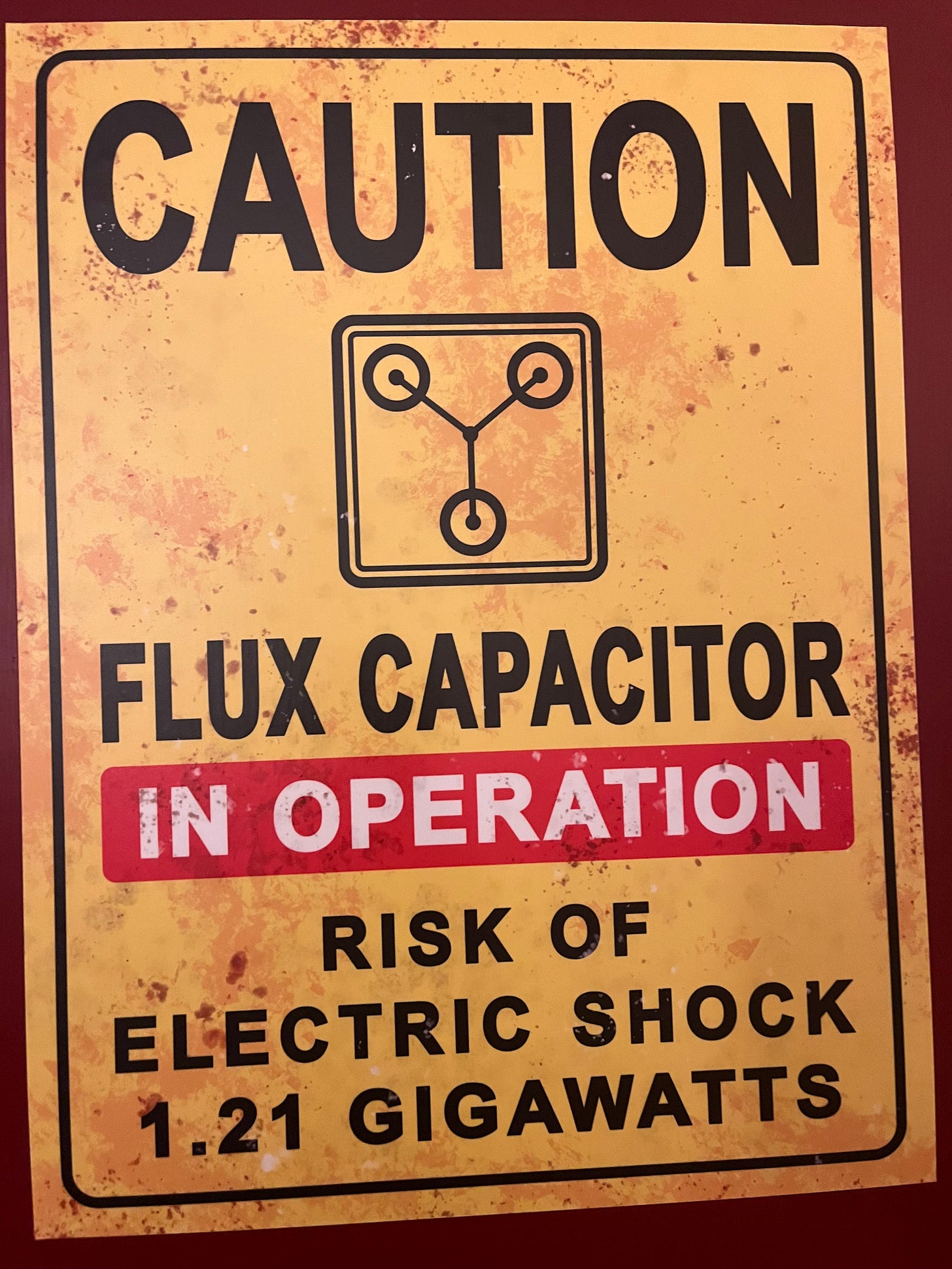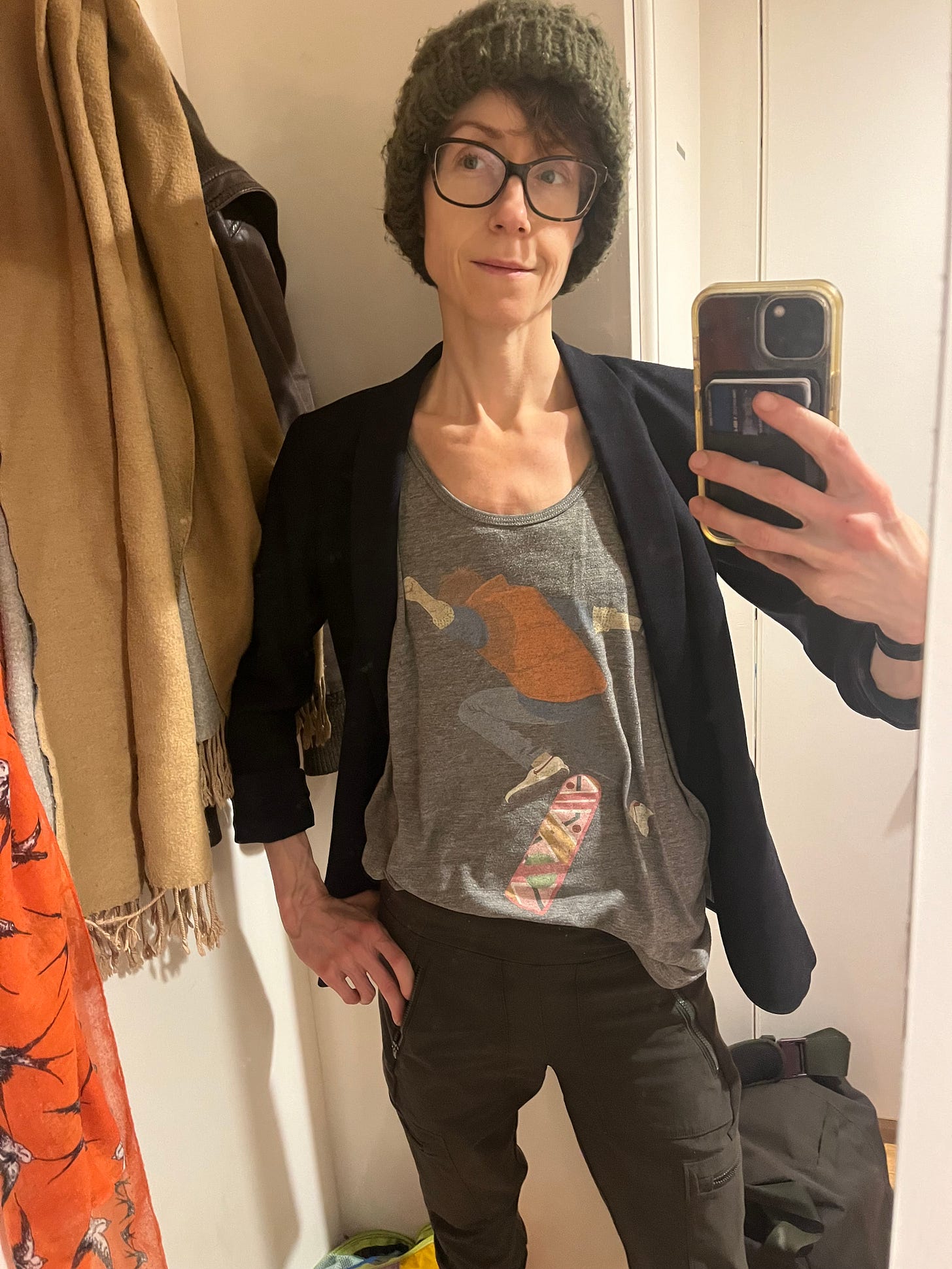I didn’t even realize what day it was when I bought the tickets for “Back to the Future: the Musical,” having the privilege of not being in America right now. It was simply the day the already-discounted seats were even cheaper and my friend and I were both free. When I realized it was also the day Donald Trump was being inaugurated, AGAIN, all I could do was bitterly laugh.
It’s not funny, obviously, when considering the untold numbers of my trans, queer, neurodivergent, disabled, and BIPOC siblings who will be denied potentially lifesaving care; who will be subject to increasingly repressive legislation that strips rights, services, access, housing, and funding from the underrepresented; whose bigoted family members will be emboldened to bar them from their homes or harm them. I haven’t even allowed myself to fully enter into the horror or the implications of what it means that America is here, again, after everything we went through the first time. It seems many really do want to go back to 1955, the decade where Marty keeps getting trapped.
Quick, Doc, get the DeLorean! We have to go back to 2016 and stop this horrible disaster from happening!
However, maybe there’s another way.
“Back to the Future,” I realized during the performance, is one big metaphor for trauma healing, harkening back to this practice’s shamanic roots. We see George McFly, Marty’s dad, as a wet-palmed, anxious, groveling adult under the abusive thumb of his boss, Bif Tannen, the same kid who bullied him in high school. Lorraine, his mom, is a vodka-swilling housewife arrested in teenage development, fixated on the romantic image George presented the first time they danced, an archetype he never again embodied. The parents are constantly projecting their fears and desires all over their frustrated children, encouraging them to play it safe and stay small.
But Marty chooses differently. Instead of repeating the same patterns, he follows his own hero’s path, pursuing his dreams of becoming a musician. Along the way, he meets an otherwordly guide who initiates him in the mysteries of the universe, including the flexibility of the so-called “laws” that appear to govern our consensus reality, the ones Newtonian physics teaches us are most unchanging: space and time. Using their technology, Doc and Marty learn to bend the rules and walk between worlds—going back into the past and enabling different decisions to be made, opening new timelines that help heal Marty’s whole family.
Magic like this happens every day, and you don’t need a flux capacitor or plutonium to do it. Trauma healing modalities that involve working with “parts” and targeting ancestral patterns allow for this same kind of healing, where you get into a meditative state and travel in your mind back to 1985, or whenever the trauma first happened; walk past versions of yourself and your family members through the challenging situations; and rewrite the story, telling the characters the truth and giving them the tools to make different choices. It’s a form of self-parenting and compassionate witnessing, allowing the parts that have been exiled to be seen, held, and guided in both love and firmness.
These approaches include Internal Family Systems, where you engage past versions of yourself that have taken on lives of their own within your mind in therapeutic conversation; Compassionate Inquiry, which helps reframe shame and unhelpful behaviors as strengths; and EMDR, a more somatic practice that involves holding vibrating handles or following lights with your eyes while walking through traumatic memories and telling a new story.
It may sound like magic, and in a way, it is. You really can change the way your psyche experiences, interprets, and integrates what happened in the past—enabling a happier, healthier present and future. It’s what shamans have always done, using the technologies of spiritual rituals; trance states induced by music, meditation, and movement; and the use of psychoactive plants, trees, herbs, and fungi to travel between worlds, mediating relationships between energies and entities to keep the whole system in balance. These tools and practices are still available to us, too, living not only in Indigenous and traditional communities, but syncretic incarnations such as psychedelic therapy, medicine ceremonies and retreats, somatic therapy, kundalini yoga, and ecstatic dance, to name a few.
So here we are, back to the future again, but if there’s one thing we can learn from Marty and the Doc, it’s that history is just a suggestion—something echoed in not only in esoteric circles, but increasingly, in academic and scientific thought and research. Biologist Rupert Sheldrake, for example, says the “laws of nature” are more like habits that forms of life adopt. And habits can be changed.
One thing I’ve learned on my journey is that healing isn’t linear. It’s a spiral, like the double helix that forms our DNA, a metaphysical corkscrew you travel upward along in revolutions. This means it often feels like you’re regressing, when in fact, you’re still ascending, circling backward and forward, but always up and up. Clearly, America’s healing journey is still very much in progress. But it doesn’t mean the nation’s people, as a whole, are backsliding. I’d like to believe the country is healing non-linearly, spiraling up.
Of course, it’s entirely possible that descent into a Tannen-like dystopia is an unavoidable part of this process. I hope not, but know I’ve had to destroy my own foundations several times to rebuild. I think the answer, as corny as it seems, lies in the final musical number of both the movies and the play: the power of love. By meeting our shadowy parts—whether in the ballot box, the White House, or our own psyches—with compassion, we can quantum leap in healing.
And where we’re going, we don’t need roads.





